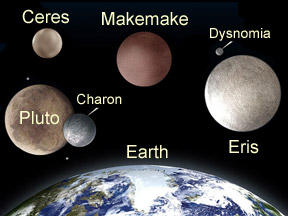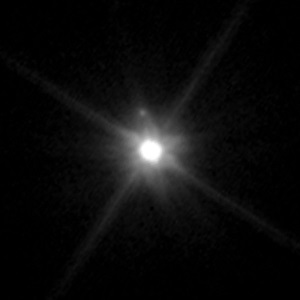

Nov 23 (TruthDive):
Scientists after making a detailed study have learnt a ‘dwarf planet’
discovered seven years ago near the edge of the Solar System is a dead,
frozen world with no atmosphere.
The dwarf planet, Makemake was
discovered in 2005 and was named after a Polynesian god, but scientists
have just now made the first detailed study of this distant planet’s
shape, size and surface.
The study was made by an international
team headed by Jose Luis Ortiz of the Andalucian Institute of
Astrophysics in Spain, making use of seven different telescopes across
Chile and Brazil.
Makemake is one of five recognized dwarf
planets, along with Ceres, Eris, Haumea and Pluto. The dwarf planet
orbits at a distance of about 7.8 billion km from the Sun—somewhere
between Pluto and Eris, the biggest and most distant of the known dwarf
planets in the solar system.
The scientists looked at Makemake as it passed in front of a distant star, Nomad 1181-0235723, only for about one minute.

Jose Luis Ortiz said when Makemake
passed in front of the star and blocked it out, the star disappeared and
reappeared very abruptly, rather than fading and brightening gradually.
This means that the little dwarf planet has no significant atmosphere.
Makemake has no moon and it is at a
great distance from the Earth, which make us difficult to study about
the dwarf planet. But with the new observations, the team was able to
glean new data about the planet’s size and density.
The dwarf planet’s red-tinged surface is
apparently covered by a layer of frozen methane, and is bright enough
to be seen by a high-end amateur telescope, despite its current distance
of nearly 53 times the distance between the Earth and the sun.
The dwarf was found to be nearly
two-thirds of the size of Pluto, but the team put the measurement on a
firmer footing, measuring it to be not quite spherical – about 1,430km
across in one direction and 1,500km across the other.

The icy mini-planet lies in the Kuiper
Belt – a region littered with frozen objects, more than four billion
miles from the Sun. It completes an orbit every 310 years or so. The
team estimates that Makemake has a density of 1.7 grams per cubic
centimetre

No comments:
Post a Comment